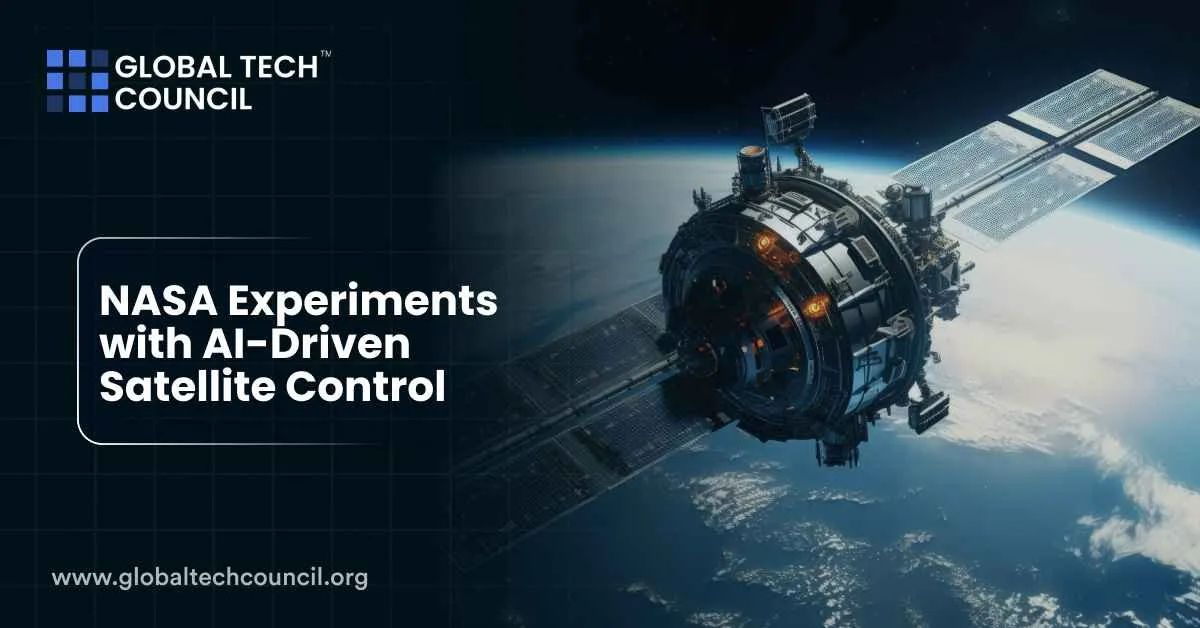
It’s a major leap forward in space technology, putting more control in the hands of the satellite itself.
What Is Dynamic Targeting?
Dynamic Targeting is an onboard AI system that helps satellites analyze their surroundings and make instant decisions. The system was tested on a small satellite called CogniSAT-6 in March 2024. Once in orbit, the satellite tilts up to 50 degrees ahead, scans the view, and uses AI to decide if the conditions are good for capturing useful images.
If there are clouds or bad weather, it skips the shot. If the view is clear or there’s something important like a wildfire, it takes action right away. This all happens without waiting for commands from Earth.
How It Works in Real Time
The process is quick and efficient. The satellite moves at over 17,000 mph but still completes the full cycle—from scanning to capturing an image—in under 90 seconds. The AI runs directly on edge computing chips installed onboard. It doesn’t need to send data back and wait for approval.
This system mimics how a human might act with a camera. If it sees clouds, it saves battery and memory. If it spots something useful, it captures and stores the image.
Step-by-Step Breakdown
- The satellite tilts forward
- It takes a preview image
- The onboard AI checks for clouds, clarity, or events
- If conditions are right, it takes the final image
- The decision is made without human input
Real-World Benefits of NASA’s Dynamic Targeting
| Key Benefit | Description | Why It Matters |
| Smarter Imaging Decisions | Skips cloudy or low-value shots | Saves battery, storage, and bandwidth |
| Rapid Event Response | Captures fast-changing events like wildfires or storms | Improves emergency data availability |
| Onboard AI Processing | Makes decisions in orbit using edge chips | Reduces delay from Earth-based control |
| Power & Storage Efficiency | Avoids wasting resources on low-quality data | Extends satellite life and lowers costs |
| Real-Time Autonomy | Operates fully on its own without waiting | Enables global, 24/7 response to unexpected situations |
This table makes it clear that NASA’s AI system does more than automate—it optimizes satellite operations for speed, quality, and value.
Previous Milestones in Autonomous Satellites
NASA has been working on satellite autonomy for decades. Dynamic Targeting is not the first example. Earlier missions set the stage.
- Deep Space 1: Launched in 1998, it used a Remote Agent AI to navigate, fix faults, and plan tasks without Earth contact.
- Earth Observing-1 (EO-1): Launched in 2000, it used AI to choose which targets to image, reducing manual planning.
- Current projects like STARS are training groups of satellites to coordinate with each other using reinforcement learning.
These systems were early but groundbreaking. Now, with better chips and algorithms, AI is becoming standard for onboard control.
NASA’s Key AI Satellite Programs Over Time
| Program / Mission | Launch Year | AI Role Description | Impact on Future Missions |
| Deep Space 1 | 1998 | Remote Agent managed planning, fault recovery, and navigation | First use of full AI autonomy in space |
| Earth Observing-1 | 2000 | Scheduled imaging based on onboard AI decisions | Pioneered intelligent Earth observation |
| CogniSAT-6 | 2024 | Ran Dynamic Targeting to scan and react in under 90 seconds | Set benchmark for real-time, autonomous imaging |
| STARS Program | 2025 | Trains satellites to act together and share data autonomously | Builds trustable, multi-satellite AI ecosystems |
| Ongoing AI Ops | Ongoing | Health checks, predictive maintenance, anomaly detection | Reduces risk and cuts down ground-based oversight |
This timeline shows how NASA has gradually moved from simple automation to complete AI-driven independence in space missions.
How NASA Uses AI Beyond Imaging
AI is not only helping with photo decisions. It also powers:
- Predictive maintenance: Finding problems before they happen
- System health monitoring: Spotting faults early
- Mission planning: Adjusting tasks based on power and bandwidth
- Coordination: Helping different satellites work as a team
The STARS program is a great example. It allows groups of satellites to decide who does what, when, and how—all without step-by-step instructions. AI models in these cases are trained to act safely, follow rules, and stay efficient.
Broader Impact on Earth and Space Operations
Dynamic Targeting could help agencies like FEMA and NOAA get faster data on disasters. Fires, floods, or storms could be detected in near real time, and responders would get high-quality images when they matter most.
For Earth monitoring, this could mean better environmental tracking. For deep space, it could mean smart exploration without needing constant ground updates.
Real Use Cases for Professionals
If you’re in aerospace, defense, AI, or Earth sciences, this kind of real-time autonomy matters. Here’s how you can prepare:
- Explore Deep Tech Certification to understand satellite systems and autonomous mission planning
- Enroll in Data Science Certification to work on AI models for edge devices and satellites
- Use Marketing and Business Certification to position these innovations in commercial space tech markets
These skills will be in high demand as agencies and companies build the next generation of autonomous systems.
Final Takeaway
NASA’s Dynamic Targeting is a powerful example of how far AI has come. Instead of waiting for ground control, satellites can now see, think, and act within seconds. That saves time, resources, and opens new doors for how we observe Earth and space.
With more satellites expected to launch in the coming years, autonomy will become a key requirement. Whether you’re a researcher, a student, or a tech builder, now is the time to get ahead of the curve.